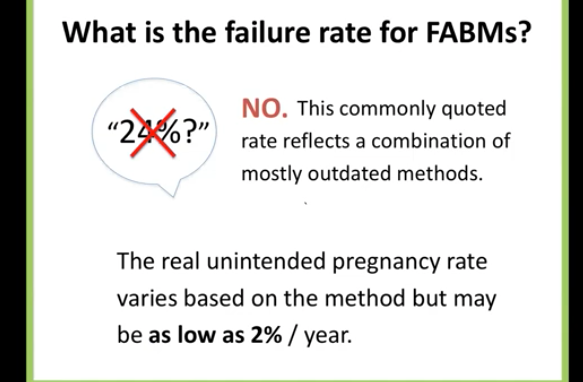
Mother Jones illustration; Carolyn Kaster/AP
Ladies, have you ever wanted to learn the fertile secrets hidden in your cervical mucus? If so, the Trump administration is here to help!
The US Department of Health and Human Services has created a webinar entitled “Focusing on Fertility,” to introduce you to the world of “fertility awareness,” a method of natural family planning that involves charting your menstrual cycles, your daily body temperature, and the consistency of your vaginal secretions. An approach once largely the province of the Catholic Church, where the rhythm method reigned supreme, fertility-awareness based methods (FABM) are its more sophisticated successor. But now, courtesy of the Trump administration and your tax dollars, anyone can learn how to avoid getting pregnant with natural methods that HHS claims “are up to 98 percent effective” at preventing pregnancy.
The president may be a philandering, twice-divorced libertine, but the fertility-awareness webinar is yet another example of how much the religious right is driving his administration’s social policy. Alex Azar, an anti-abortion, Orthodox Christian who considers Vice President Mike Pence a mentor, is the head of Trump’s HHS. He has stocked the agency with like-minded lieutenants, and together they have reshaped HHS women’s health programs to suit the agenda of evangelical Christian and Catholic activists who not only oppose abortion, but also most forms of birth control and comprehensive sex education.
To that end, the agency has gone all in for so-called natural family planning, even as it has been methodically dismantling programs that broaden access to effective contraception. Last year, after imposing draconian anti-abortion rules on the Title X program that led Planned Parenthood to relinquish $60 million in funding and drop out, the administration rewrote the criteria for organizations applying to receive Title X family planning grants. The new grants prioritize groups that promote abstinence and FABM, as opposed to contraceptives. This year, HHS awarded a $1.7 million, three-year Title X grant to a Catholic nonprofit, Obria, to provide family planning services that only include natural family planning and abstinence counseling but no more conventional methods of birth control—not even condoms.
The FABM webinar, which aired live in June and is now on YouTube, was done in partnership between the Office of Population Affairs, which oversees Title X, and the Center for Faith and Opportunity Initiatives—the religious outreach arm first created by President George W. Bush, which Trump revived at HHS in May 2018 through executive order. The center is run by Shannon Royce, an anti-LGBT and anti-abortion activist who previously worked at the evangelical Family Research Council and who has been instrumental in the Trump administration’s rollback of health protections for transgender people.
The webinar’s lead presenter is Marguerite Duane, a doctor who runs the non-profit advocacy group FACTS: the Fertility Appreciation Collaborative to Teach the Science. She is trained to teach the Creighton Model, a natural family planning method developed by the Pope Paul VI Institute for the Study of Human Reproduction. Founded in 1985 by a (male) Catholic doctor in Nebraska to build “a culture of life in women’s health care,” the institute is named for the pope who issued Humanae vitae, the controversial 1968 encyclical forbidding Catholic women from using contraception.
An outspoken critic of birth control as harmful to women, Duane is not exactly a dispassionate medical professional. She made some waves in 2017 when she wrote a piece in the conservative periodical The Federalist arguing that the reproductive-rights activists seeking to make contraception more accessible through the Affordable Care Act were ignoring the science about its risks. Indeed, she questioned the premise that birth control was even “necessary” for women’s health.
She is also a member of a grassroots advocacy group called Women Speak for Themselves that was organized in 2012 by a Catholic law professor to fight the ACA’s contraception mandate in court and public opinion. According to their website, the group represents the thousands of women who had “experienced the ways contraception and abortion have immiserated women.” In 2012, the group wrote an open letter to President Obama and HHS arguing that “government contraceptive programs inevitably change the sex, dating and marriage markets in ways that lead to more empty sex, more non-marital births and more abortions.”
None of this background is conveyed in the HHS webinar, which identifies Duane as a board-certified family practitioner and adjunct associate professor at Georgetown medical school. Katelyn Walls, a special assistant at the HHS Center for Faith and Opportunity Initiatives, kicks off the webinar by noting, for housekeeping purposes, that it is solely educational and “off-the-record and not intended for press purposes.”
Walls first introduces Diane Foley, the deputy assistant secretary in charge of the HHS Office of Population Affairs, which oversees Title X. Foley is also a doctor and anti-abortion activist who is morally opposed to birth control. A vocal opponent of comprehensive sex education, she once suggested that showing high school students how to put condoms on bananas could be “sexually harassing.” But on the webinar, she shows no such prudishness in welcoming viewers for a graphic online discussion of vaginas, lubrication, menstrual cycles, sperm, and of course, sex.
After explaining that her office has a mandate from Congress to promote natural family planning, Foley introduces Duane. She begins her power-point presentation by stating that despite what people may have heard, “Modern fertility-based methods are not the rhythm method.” They are based on science, she insists. Duane guides viewers through the monthly stages of a woman’s fertility and describes the changes in cervical mucous that occur throughout the cycle—from “cold, dry” to “moist, fertile,” according to one slide that poetically compares the cycle to the seasons.
How effective is this method of pregnancy prevention? “Effectiveness rates are about the same as the pill and better than condoms,” Duane asserts. Fertility-awareness based methods, she says, have been proven to result in an unintended pregnancy rate of less than 2 percent a year.

From “Focusing on Fertility: Intro to Fertility Awareness-Based Methods”
US Department of Health and Human Services
For women familiar with the major pitfalls of rhythm method, i.e. that it doesn’t work, 2 percent is a staggering statistic—a figure on par with the most effective forms of implantable contraception like the IUD. It’s also wildly misleading. Here’s why: Most of the research on the effectiveness of FABM is junk science. In a systematic review published in the medical journal Obstetrics & Gynecology in 2018, researchers from a wide range of ideological perspectives, including FABM proponents, looked at virtually every study ever done on the effectiveness of fertility awareness methods. They concluded that the vast majority of the 53 studies they identified were of low quality.
Some that focused on Duane’s Creighton Model were among the worst, in part because of the unusual way investigators classified pregnancies. If a woman using the Creighton method got pregnant after having sex on a fertile day, the investigators assumed this was “achieving [pregnancy]-related behavior.” Chelsea Polis, a senior research scientist at the Guttmacher Institute, a reproductive health organization, and one of the authors of the 2018 systematic review, explains that effectiveness studies for other contraceptive methods would have counted those pregnancies as a contraceptive failure. But investigators on most Creighton studies considered those pregnancies a success. After all, investigators assumed, if a woman got pregnant on a fertile day, she must have intended to do so, and they excluded those pregnancies from the failure rate. “Excluding these pregnancies could substantially underestimate Creighton failure rates,” Polis says, “making estimates for the method look more effective than they may actually be.”
Even the better studies were flawed. The authors concluded that the effectiveness rate of the various FABMs could vary wildly, from a low of 1.8 or as high as 34 percent—a rate twice as high or higher than some of the least effective forms of birth control such as an old-fashioned diaphragm or condom. In an email, Duane argued that the low-quality studies tended to be older, and very small, and that “more recent high quality studies demonstrate these methods can be used effectively to prevent pregnancy.”
Even before the 2018 systematic review, the Centers for Disease Control has long pegged the failure rate for FABMs at a pretty dismal 24 percent, a figure that has irked natural family planning advocates. Critics have argued that the CDC’s figure unfairly lumped the rhythm method in with more effective modern biomarker-based fertility awareness methods that use ovulation detectors and other tools. In May 2017, Duane’s FACTS launched a petition drive to demand that the CDC adjust its published failure rate based on newer studies to make FABMs look better compared with other forms of birth control. The petition never garnered many signatures and was never submitted. Nonetheless, this year, the CDC reassessed its public data and now says the failure rates for FABMs vary from 2 to 23 percent. (HHS launched the fertility webinar in response to that adjustment, according to a spokesperson.)
Despite the CDC’s adjustment, Mary Alice Carter, senior advisor to the HHS watchdog group Equity Forward, says HHS is being irresponsible to suggest in the webinar that fertility awareness works as well as contraception. The Trump administration, she says, is “propagandizing against the pill and other hormonal forms of birth control in favor of these fertility awareness-type methods, even though we know they are not the most effective or the best choice for most people.” She says that if you look closely at the research, it’s clear that achieving a 98 percent effectiveness rate through fertility awareness is extremely difficult. “The amount of perfection it requires and the amount of steps it requires,” she says, “would put it out of reach for most people.”
There is a reason that fewer than 2 percent of American women use some sort of fertility awareness method to prevent pregnancy—and is likely also the reason that only 118 people signed on to watch the fertility webinar air live. The most effective natural methods aren’t particularly useful for impulsive teenagers, for instance, or, say, Donald Trump and Stormy Daniels. They require intensive training, including hours of classes over many months, and dedication to tracking all the various biomarkers—from daily body temperature to cervical mucus to urinary hormone metabolites—not to mention a joint commitment to periodic abstinence. “It takes a particular kind of relationship and context and user to make these [methods] work,” Polis says.
In the webinar, Duane allows that FAMB is high-maintenance and urges viewers not to simply try using one of the many online apps devoted to tracking fertility without proper instruction from a trained professional like herself. (The FDA recently approved an app called Natural Cycles as a medical device for contraception.) Perhaps more importantly, she recognizes that natural family planning requires a cooperative partner. “These truly are shared methods of family planning,” she says.
The limitations of FABM, and their distinctly religious foundation, raise the question of whether the fertility webinar is really the best use of HHS resources. Mara Gandal-Powers, director of birth control access at the National Women’s Law Center, says FABM has a role to play as one of a wide range of options for women, but the demand is still very small. She thinks it’s not something the government would be prioritizing “if they were being responsive to family planning providers or women.”
But natural family planning isn’t just about preventing pregnancy, Duane assures us in the webinar. It offers wide-ranging health benefits. Once embarked on fertility awareness, women will find these methods can help them deal with PMS, recognize menopause, and even get pregnant, according to the webinar. (As proof of concept, Duane has four children, whose timing she credited in an email to her line of work.)
After Duane wraps up her spiel with a plug for natural family planning as an antidote to the mainstream medical complex, Lisa Jurski takes over. A physical therapist, Jurski also teaches the Creighton method in Chicago and is here to persuade viewers that spending months trying to accurately work out their fertility window and then giving up sex for 12 days every month is preferable to just getting an IUD or going on the pill.
She admits that “abstinence is commonly cited in the mainstream medical literature as a disadvantage of FABMs.” Not to worry, she counters. FABMs have gotten a bad rap. People who use natural methods, she says, in fact find that they have better sex as a result, albeit less frequent. “Periodic abstinence increases their anticipation,” she says imparting a secret about the male libido.
Among her other big selling points: Research shows that natural family planning is good for your relationship. Women who use these methods, she says, “report feeling more respected and less used.” The divorce rate among couples using fertility awareness methods is only 1 percent, according to one study Jurski cites. It’s easy to see why, she explains. “If you can talk about cervical mucus, you can talk about anything.” Another likely reason, unstated, is that all those couples who are most committed to using fertility awareness just could be devout Catholics and conservative Christians who are opposed to divorce.
The webinar is not a detailed guide for personal use. For more information and assistance in choosing the right method for you, Jurski directs viewers to the website of a group called Natural Womanhood, a nonprofit opposed to hormonal contraception. It’s run by Gerard Migeon.
A dude.
You can watch the whole video here:












